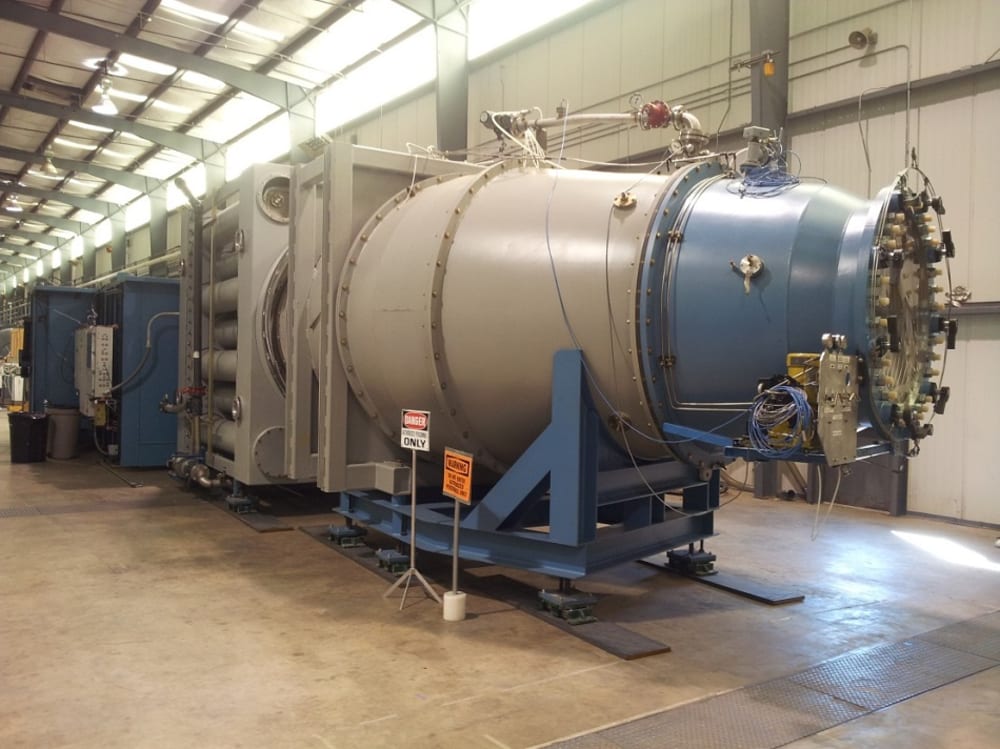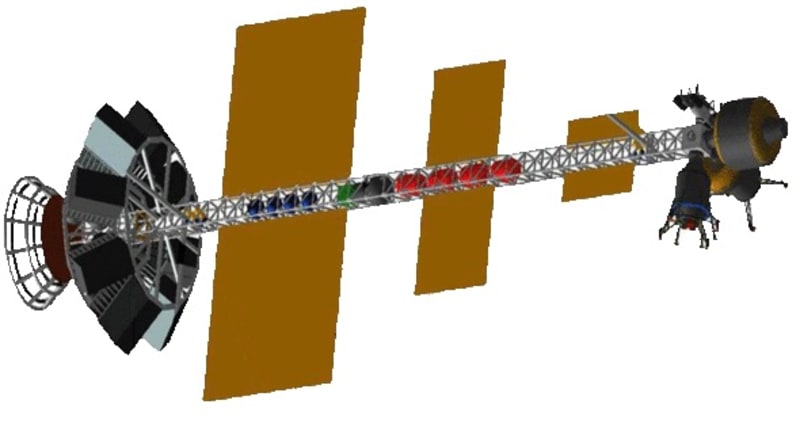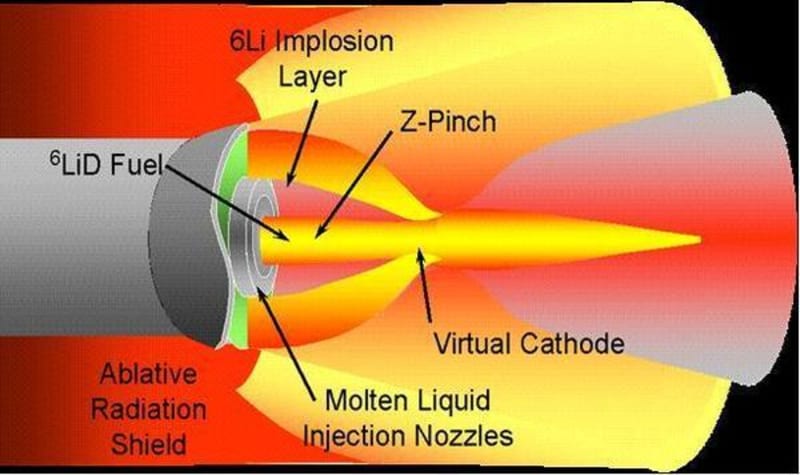
The University of Alabama in Huntsville is conducting pulsed fusion propulsion research with the Charger-1 device. The Charger-1 is a ~500 kJ pulsed power facility capable of 2 MA discharges at 3 TW of instantaneous power. For comparison, the electrical power in the entire global grid is 15 TW. The Charger-1 will be used to research pertinent technologies for pulsed z-pinch fusion propulsion. In z-pinch fusion, a current discharge is used to ionize a fuel pellet, and the resulting plasma is compressed by the Lorentz force until a fusion reaction occurs. A magnetic nozzle is then used to transfer momentum from the expanding fusion plasma to the spacecraft for propulsive impulse. As the fusion plasma expands, the magnetic field that makes up the nozzle is compressed until the magnetic pressure is equivalent to the dynamic pressure of the plasma. The plasma is then ejected from the nozzle as the magnetic field rebounds to its initial position.
If fusion can be fully developed, it could enable astronauts to make roundtrip voyages to Mars lasting a total of about six months. Manned voyages to Jupiter and beyond could also be accomplished within a year. This is clearly advantageous over chemical propulsion, which necessitates the usage of a prohibitively massive spacecraft and/or long voyage times for any manned mission to Mars or beyond. In addition to this, a fusion spacecraft could be single-stage and reusable, which would enable manned interplanetary missions to become routine.
The Charger-1 is still in the process of being assembled and furbished, and much remains to be done before fusion research can begin. Volatile NASA funding makes it crucial that alternate sources of funds are used to support this research.
Funds obtained from this campaign will be used to purchase the hardware needed to complete the Charger-1 and make it operational. Among the materials and equipment needed are a water filtration system for the transmission lines, concrete pads for water and oil tanks, a data acquisition system, and 15,000 gallons of transformer oil needed to prevent arcing in the capacitor bank.
Once all of this hardware has been obtained and the Charger-1 is operational, a series of initial experiments with z-pinch diodes and magnetic nozzle will be conducted. These experiments are crucial in order to develop an optimal method for generating fusion for spacecraft, as well as deriving thrust from the fusion plasma to propel a spacecraft.
Video
-
Awards
-
 2013 Top 100 Entries
2013 Top 100 Entries
Like this entry?
-
About the Entrant
- Name:Kevin Schillo
- Type of entry:individual
- Software used for this entry:Matlab
- Patent status:none








